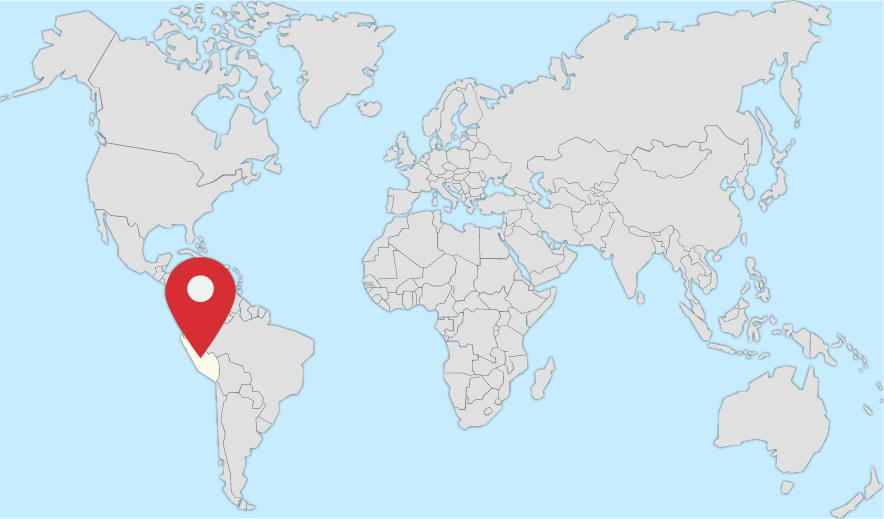In the 1950s, high-sea sport fishing was promoted recreationally in the community. A group of entrepreneurs founded the Cabo Blanco Fishing Club. They attracted famous visitors including Ernest Hemingway, Mike Lerner, Bob Hope, Lord Mountbatten, Bill Hatch, biologist Francesca La Monte, Maisy, James Stewart, Gregory Peck, John Wayne, Cantinflas, Henry Ford, Ray Flanagan, Van Heflin, Doris Day, Paul Newman, Spencer Tracy, Marilyn Monroe, Luis Miguel Dominguín, Lucía Bosé, Gary Cooper, Ted Williams, Nelson Rockefeller, and Prince Philip, Duke of Edinburgh, among other rich and famous actors, actresses, and entrepreneurs.
Vicente became a link between the administrators of the Lobitos Petroleum Company (CPL), the International Petroleum Company (IPCo), and the local fishermen. With the support of his neighbors, he petitioned the company to build houses, supply natural gas and drinking water, and provide other benefits to the community that was now his own. And in this community he found love when he met Doña Salomé Tume, also known as “Mama Saloma,” who will be the mother of his children and his partner for the rest of his life. Together they gave birth to a big family that still lives and shapes Cabo Blanco and the Peruvian coasts. Descendants, grandchildren, great-grandchildren, and great-great-grandchildren of Taita Tume are prominent professionals in Peru and abroad.
During the cold seasons Vicente, Mama Saloma and their kids moved from Cabo Blanco to the beaches of the north, where he built a cabin to shelter from the winter weather while fishing on a balsilla with other friends, including Mr. Máximo Jacinto “Don Macha”, a sort of local celebrity, together with other nine fishermen who caught the great black marlin. They visited the fishing areas along the shore in places such as “Quebrada Verde,” – where the cabin was located – “Puerto Rico,” and “El Ñuro.” At Puerto Rico beach there was a beached mother-of-pearl shell and Doña Juana Tume, daughter of Taita Tume, found a giant pearl the size of a pigeon egg. Doña Juana is now ninety-two years old and is the only surviving daughter of Taita Tume.
One of Vicente’s sons, Mr. Rufino Tume, as well as two of his sons-in-law, Jesús Ruíz “Taita Mama” and Miguel Custodio, were part of a crew of nine who participated in the capture of the world record Black Marlin, weighing 1560 pounds. Another son-in-law, Pablo Córdova, was the bartender who attended and chatted for countless hours with writer Ernest Hemingway at the fishing club bar. Another son-in-law, Mr. Baltazar Chapilliquén, was a leader and national representative of artisanal fishermen and belonged to the National Federation of Artisanal Fishermen of Peru.
Mr. Baltazar’s two older sons are fishing experts with expertise in fisheries engineering. Simon, the eldest, held numerous internships with fishing experts in Japan. He is a skilled fisherman and one of the experts at the Paita Fishing Training Center. He has also conducted tests in fish farms with high-demand species, such as cabrilla, cabrillón, and mero murique. He believes it is possible to create fish farms with these species, potentially securing future food supplies for the population. Simon, Baltazar’s other son, is an artisanal fisherman and diver who has often sailed the sea of Cabo Blanco on the small sailboat “Simbad,” beyond thirty miles from the coast in search of tuna. In 2005, he was awarded “Fisherman of the Year” by the Ministry of Fisheries in recognition of his outstanding aquaculture projects in his province. He is also a professor of Fisheries Technology at IST Talara.
Baltazar’s engineer son, Mr. Carlos Chapilliquén, is currently a leader of the fishermen of Cabo Blanco (President of the Fishermen’s Guild). Under his leadership, a modern pier was built, the new Artisanal Fishing Landing (DPA) of Cabo Blanco, one hundred years after his great-grandfather, Vicente “Taita Tume,” was a guard at the first pier. Carlos specializes in deep-sea fishing, developing his expertise in catching tuna and albacore with trolling.
Carlos Chapilliquén and his counterparts from the neighboring cove of “El Ñuro” made it possible for the artisanal sailboat to be declared national heritage, as stated in the newspaper El Peruano: “Declare Cultural Heritage of the Nation to the knowledge, wisdom, and practices associated with traditional navigation and fishing with artisanal sailboats in the coves of Cabo Blanco and El Ñuro in the province of Talara, department of Piura.” During his tenure, he also institutionalized the “Regata del Siglo,” perpetuating the sailing fishing boat competitions practiced in Cabo Blanco since ancient times.


![[click the right arrow to scroll through the slideshow]](https://lexiconoffood.com/wp-content/uploads/2023/03/1-2.jpg)











